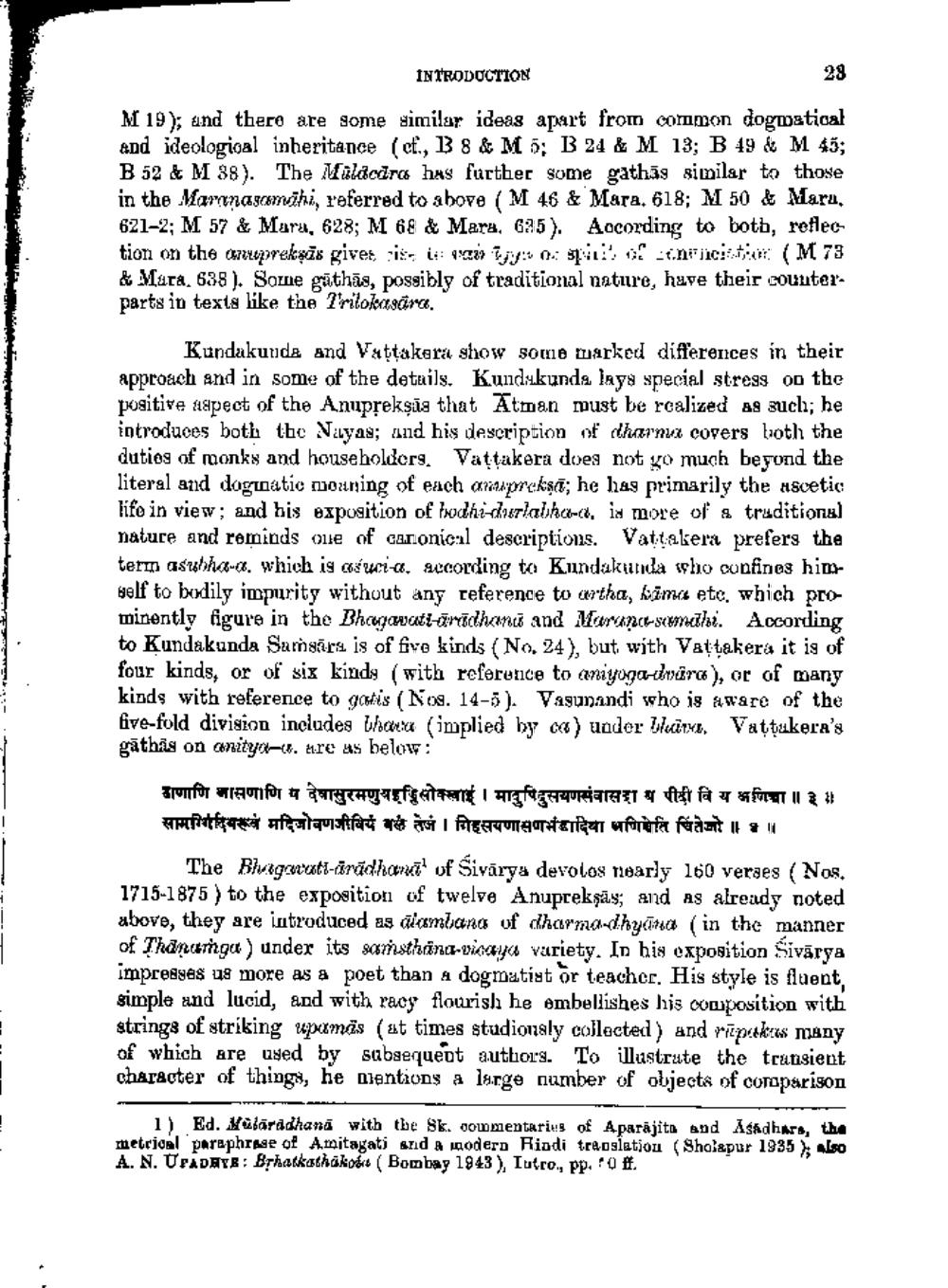________________
INTRODUCTION
28
M 19); and there are some similar ideas apart from common dogmatical and ideologioal inheritance (ct., B 8 & M ; B 24 & M 13; B 49 & M 45; B 52 & M 38). The Malacara has further some gathas similar to those in the Marinasmihi, referred to above ( M 46 & Mara. 618; M 50 & Maru. 621-2; M 57 & Maru, 628; M 68 & Mara, 635). According to both, reflec tion on the preprekæīs gives
:: 0 :: cnctX (M 73 & Mara 638). Some gathās, possibly of traditional nature, huve their couuterparts in texts like the l'rilokasar.
F
Kundakuude and Vattakara show some marked differences in their approach and in some of the details. Kundu.kunda lays special stress on the positive aspect of the Anupreksās that Atman must be realized as such; he introduces both the Nayag; and his description of dharnux covers both the duties of monks and house holders, Vattakera does not yo much beyond the literal and dogmatic mouning of each amprckstē; he has primarily the ascetic life in view; and his exposition of hodhi-durlabhc-cd, is more of a truditions) nature and reminds me of canonical descriptions. Vattakera prefers the term asubha-c. which is crucia, according to Kundakunda who confinos himself to bodily impurity without any reference to atha, kim ete, which prominently figure in the Bhagawati-iridhamu and Maranc-sub. According to Kundakunda Sumsāra is of five kinds (No. 24), but with Vattakera it is of four kinds, or of six kindy (with reference to aniyoga-väro), or of many kinds with reference to contris (No. 14-5). Vagunandi who is aware of the five-fold division includes that implied by c) under WurysVattukera's gāthis on anityn-. are as below:
-INAŁU
डाणाणि भासणाणि य देवासुरमणुयइटिसोक्लाई । मादुपिदुसयणसंवासहाय पीढ़ी वि य अणिचा ॥ ३ ॥ सामाग्गिदियरूवं मदिजोवणजीवियं बसे तेज । गिइसपणासणभंडादिया भणिति चिंतेजो ॥१॥
The Blagouti-crādhana of Sivārya devolos nearly 160 veraes (Nor. 1715-1875 ) to the exposition of twelve Anuprekşās; and as already noted above, they are introduced as dicamtand of dharma-dhyana (in the manner of Tharanga) under its sansthrina-vicaya variety. In his exposition Sivārya impreses us more as a poet than a dogmatist or teacher. His style is fluent. simple and lucid, and with racy flourish he embellishes his composition with strings of striking upomas (at times studiously collected) and riputkeus many of which are used by subsequent authors. To illustrute the transient character of things, he Dentions a large number of objects of coraparison
1) Ed. Xabarddhani with the Sk. commentarius of Aparajita and Asadhars, the metrical paraphrage of Amitayati and a modern Riodi translation (Sholapur 1935); Also A. N. UPADAYR: Bệhatkathakoa (Bombay 1943), Iutro., pp. Of




